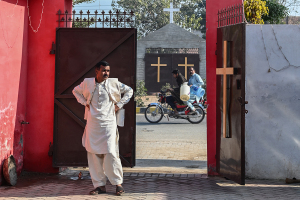Church of England Will Not Die, Records Show
Church has new way to mark attendance
Religious leaders within the Church of England believe there is a real crisis when it comes to the future of the church, saying it will be dead in the next 20 years.
The Rev. Patrick Richmond, a Synod member from Norwich, warned the national assembly last week that the Church of England is entering into a "perfect storm" with an overabundance of elderly members. Richmond basically believes the Church of England as a whole is "dying off" because of the number of senior citizens attending church in comparison to younger members.
However, records from the Archbishops' Council's Research and Statistics Unit tell a different story.
Updated records show that more than 36 percent of those who worship within the Church of England are under the age of 45. New statistics show that weekly services in Church of England cathedrals in 2011 is at 1.7 million people each month, a level that has been maintained since the turn of the millennium.
The Archbishops' Council's Research and Statistics Unit recently changed the way the Church of England gathers statistics and measures attendance.
The new statistics teams also show that since the turn of the millennium, the Church of England has steadily grown by a total of 37 percent, which is about four percent on average each year.
Dismal outlooks by local clergy are nothing new to the church. According to church records, clerical comments about the demise of the Church of England are often based on skewed numbers because they are not looking at the "big picture."
George Pitcher, an author and an Anglican priest, said the clerical researchers who are noting the demise of the Church of England are using "methodologies that are fundamentally flawed." He said they used a simple flat-line projection from their flawed premise to forecast that the church is going to die in 20 years.
Richmond also told the church's national assembly that the average age of its members is now 61 and by 2020 a “crisis” of “natural wastage” will lead to their numbers falling “through the floor," according to his interview with The Telegraph.
“Aging congregations are arriving fast on the horizon,” he said. “These congregations will be led by fewer and fewer stipendiary clergy. It will be around 2020 when our congregations start falling through the floor because of natural wastage, that is people dying.”
However, the new statistics again tell a different outlook. Baptisms of young people, over 13 years of age, and the number of child baptisms have almost doubled since the turn of the millennium.
The Church of England has the largest following of any denomination or faith in Britain today. More than four in 10 in England regard themselves as belonging to the Church of England, while six in 10 consider themselves Christian.
Peter Mullen, who is the Rector of St. Michael’s Cornhill in the City of London, also disagrees with Richmond, saying cathedrals have shown more ability to survive and are drawing bigger congregations in recent years.
Mullen has written an article for The Telegraph about how his congregation has gone through the roof and is "not dying off."
"We have seen the congregation increase tenfold in the last 13 years," he wrote.
"And this is because the people of St. Michael’s are not typical people who rule the Church with a trendy lefty agendas to rival anything produced by the BBC. These are people who have a passion for theology."
To draw more members into the church cathedrals, religious leaders held more than 3,150 specially arranged services that were conducted by cathedrals last year.
These services attracted almost one million people. Regular services attracted nearly two million people while 1.63 million people attended about 5,150 public/civic events arranged in cathedrals.
Overall church attendance in Britain show that 36 percent are under 45 years of age, 39 percent between 45 and 64, and just 21 percent are 65 and over.
The Rev. Lynda Barley, director of Research and Statistics for the Church of England said the growth in the Church is because the ministry of cathedrals is valued by many people.
"The Church of England now has a treasured place in the heart of the nation and are actively used at key moments in individual lives and on public occasions," she said.
The roots of the Church of England go back to the time of the Roman Empire when Christianity entered the Roman province of Britain. From the 18th century onwards, the Church of England has also been faced with a number of challenges that it continues to face today.
Church records show there has been the challenge of responding to social changes in England such as population growth, urbanization and the development of an increasingly multi-cultural and multi-faith society.
Records also show there has been the challenge of providing sufficient and sufficiently trained clergy and lay ministers to enable the Church of England to carry out its responsibility to provide ministry and pastoral accuracy for their respective parish numbers.





























